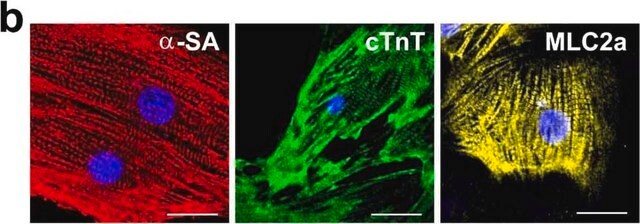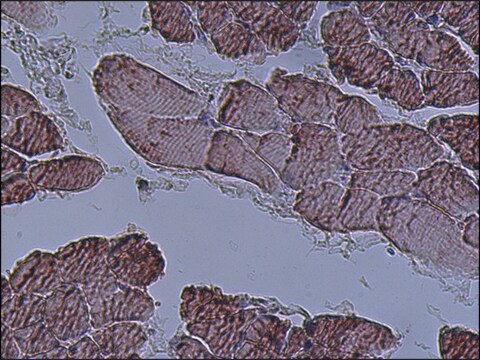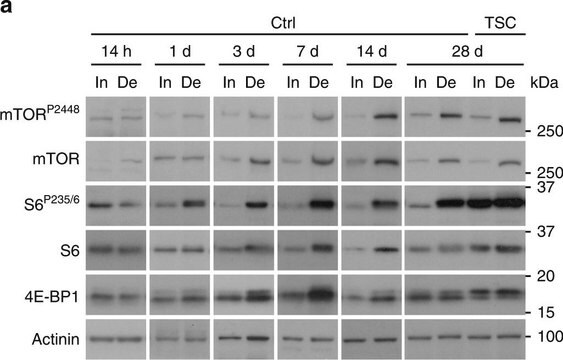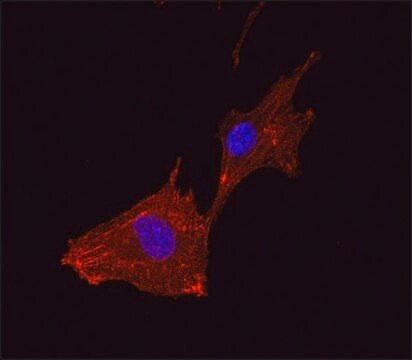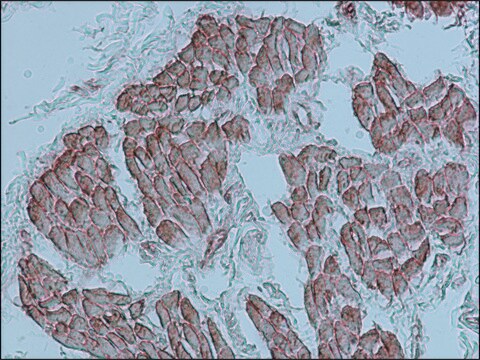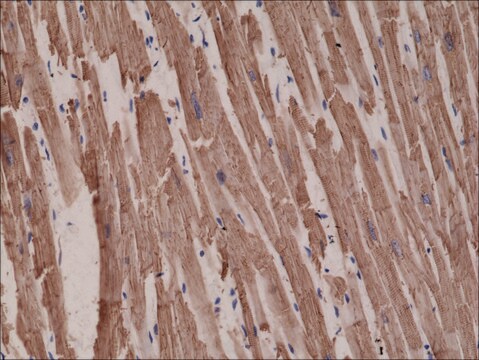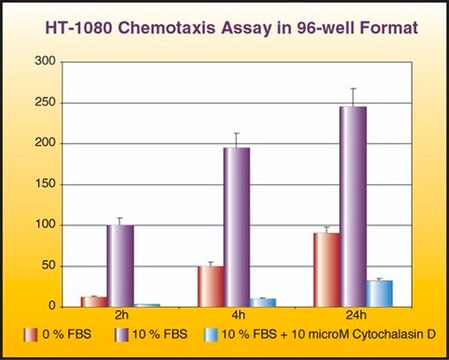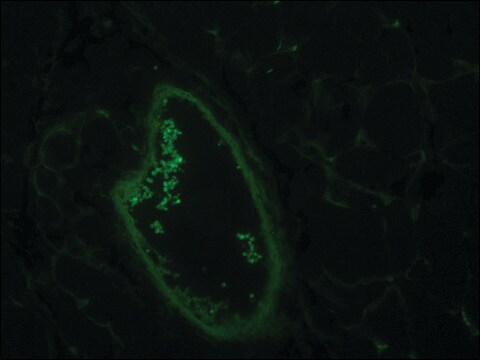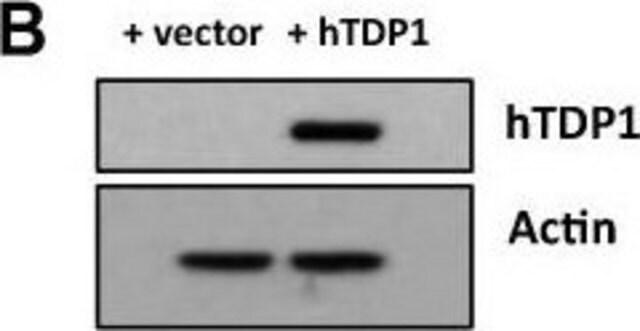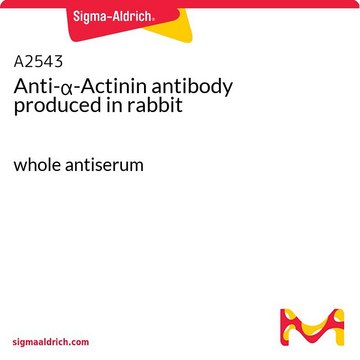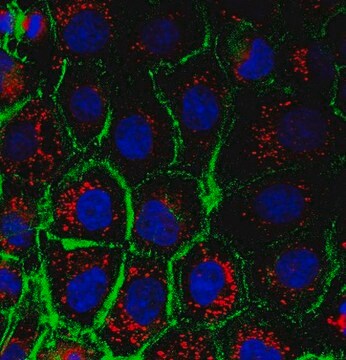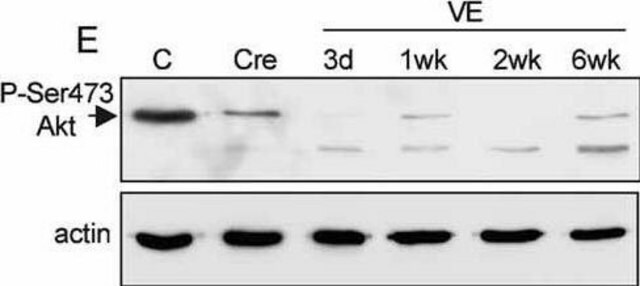A2172
Anti-α-Actin-1 (ACTA1) antibody
mouse monoclonal, 5C5
Synonym(s):
Mouse Anti-Actin
About This Item
Recommended Products
Product Name
Monoclonal Anti-Actin (α-Sarcomeric) antibody produced in mouse, clone 5C5, ascites fluid
biological source
mouse
conjugate
unconjugated
antibody form
ascites fluid
antibody product type
primary antibodies
clone
5C5, monoclonal
contains
15 mM sodium azide
species reactivity
rabbit, carp, rat, sheep, guinea pig, human, snake, bovine, frog
technique(s)
immunohistochemistry (formalin-fixed, paraffin-embedded sections): 1:500 using human skeletal and cardiac muscle
immunohistochemistry (frozen sections): suitable using human skeletal and cardiac muscle
indirect ELISA: suitable
western blot: suitable
isotype
IgM
shipped in
dry ice
storage temp.
−20°C
target post-translational modification
unmodified
Gene Information
human ... ACTA1(58) , ACTC1(70)
mouse ... Rwdd2a(69519)
rat ... Acta1(29437) , Actc1(29275)
General description
Immunogen
Application
- immunofluorescence
- double immunostaining
- double labelling terminal deoxynucleotidyl transferase dUTP nick end labeling (TUNEL) immunofluorescence staining.
Biochem/physiol Actions
Physical form
Other Notes
Disclaimer
Not finding the right product?
Try our Product Selector Tool.
Storage Class Code
10 - Combustible liquids
WGK
WGK 3
Flash Point(F)
Not applicable
Flash Point(C)
Not applicable
Choose from one of the most recent versions:
Already Own This Product?
Find documentation for the products that you have recently purchased in the Document Library.
Customers Also Viewed
Our team of scientists has experience in all areas of research including Life Science, Material Science, Chemical Synthesis, Chromatography, Analytical and many others.
Contact Technical Service
